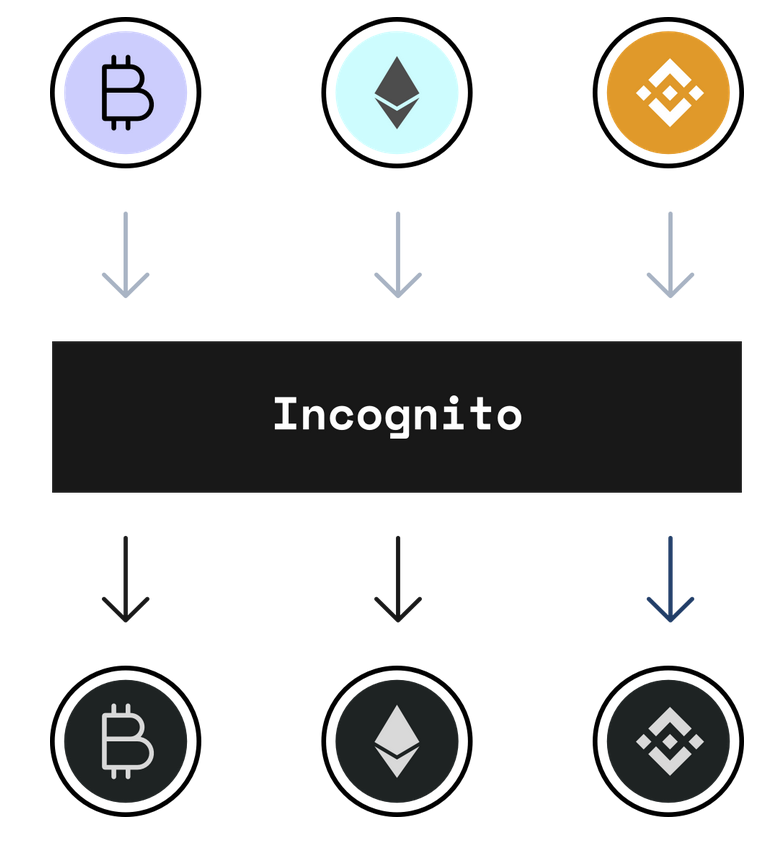‘Shield’ is a core function in the Incognito Wallet. It’s what you need to do to turn on incognito mode for any crypto asset 

Incognito is not about a single privacy coin like Zcash or Monero. The Shield function in the Incognito Wallet turns all your favorite coins into privacy coins. One tap to turn your Bitcoin into privacy Bitcoin. One tap to turn it public again. You’ve found the most convenient way to transact anonymously.
Download for Android
Download for iOS
FAQ
Question: Isn’t crypto already private?
Answer: No. Right now, anyone can find out how much Bitcoin you have and what you do with it. Every single detail of your crypto finances is displayed for the world to see. If that makes you at all uncomfortable, it might be time to protect your privacy.
Question: How does Shield work? What is Shield even?
Answer: Let’s take ETH for an example. When you shield ETH using Incognito, you’re effectively depositing it into a smart contract so no one can touch it. The privacy equivalent (pETH) is minted on the Incognito Chain, and sent to your Incognito wallet. pETH can be sent, received, stored or traded completely anonymously – your balance and activity will no longer be visible on any public ledger. To unshield your pETH and receive ETH, simply withdraw it to an external ETH wallet. The privacy counterpart will be burned, and the public coin will be released from the smart contract to your destination wallet.
Question: What about other currencies like Bitcoin, Binance, etc.?
Answer: Currently, Incognito allows users to shield multiple different cryptocurrencies through the use of multiple bridges. Bridges that have already been built: Bitcoin, Ethereum, Binance, Zilliqa, and TomoChain. NEO and Monero bridges are in the works.
As the number of blockchains increases however, doing it ad-hoc is no longer an option. We just can’t build N² bridges. Scheduled to go live later in 2020, we’ll be implementing a general bridge design that connects Incognito to any number of blockchains, allowing for secure two-way transfers of crypto whenever privacy is needed. This will mean any coin at all can be a privacy coin.
Further reading:
